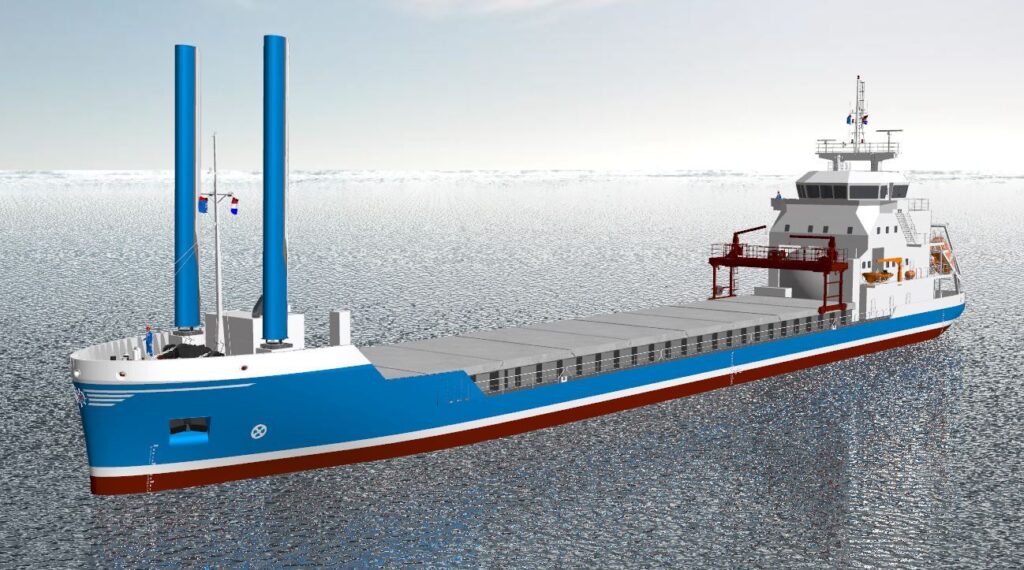World’s first hydrogen-powered cargo ship
The H2ESTIA Project aims to develop the world’s first liquid hydrogen-powered, zero-emission general cargo ship for sustainable bulk transport.
A Dutch public-private partnership is spearheading a pioneering initiative to develop the world’s first liquid hydrogen-powered, zero-emission general cargo ship.
The Dutch Innovation Company (NIM) is leading the H2ESTIA Project, which aims to transport bulk goods using the most sustainable fuel available. Supported by the Dutch Ministry of Infrastructure and Water Management, along with key maritime and technology partners, the project focuses on designing, constructing, and demonstrating a fully hydrogen-powered freight vessel for operations in the North Sea.
Hydrogen-powered propulsion
The vessel’s operational timeline has yet to be confirmed, but it will be managed by Van Dam Shipping. At the core of the H2ESTIA Project is its integrated hydrogen propulsion system, which includes a newly developed cryogenic hydrogen storage and bunkering system to ensure the safe handling of liquid hydrogen at extremely low temperatures.
A hydrogen fuel cell system, supplemented by batteries, will provide primary propulsion, delivering zero-emission power. The vessel will also incorporate wind-assisted propulsion and waste heat recovery technologies to improve energy efficiency and reduce hydrogen consumption. Additionally, digital twin technology will enable real-time monitoring, operational optimisation, and enhanced safety measures.
Sander Roosjen, Chief Technology Officer at NIM, described the initiative as a landmark development for commercial shipping. “By integrating hydrogen technology with digital innovation, we are proving that zero-emission shipping is not just a vision – it is an achievable reality,” he said.
Scaling up hydrogen shipping
The project aims to demonstrate the technological and economic viability of hydrogen-powered cargo vessels, paving the way for wider commercial adoption. It also seeks to address key challenges such as hydrogen system certification, risk management, and crew training, ensuring the safe integration of hydrogen technology into maritime operations.
Jan van Dam, CEO of Van Dam Shipping, highlighted the importance of building the necessary infrastructure alongside vessel development. “Parallel to the H2ESTIA Project, we are working to secure supply chains, as well as the required bunkering and logistics. A single ship alone does not generate sufficient demand, so collaboration at this stage is crucial in turning our ambitions into reality,” he said.
Source: Project Cargo Journal


